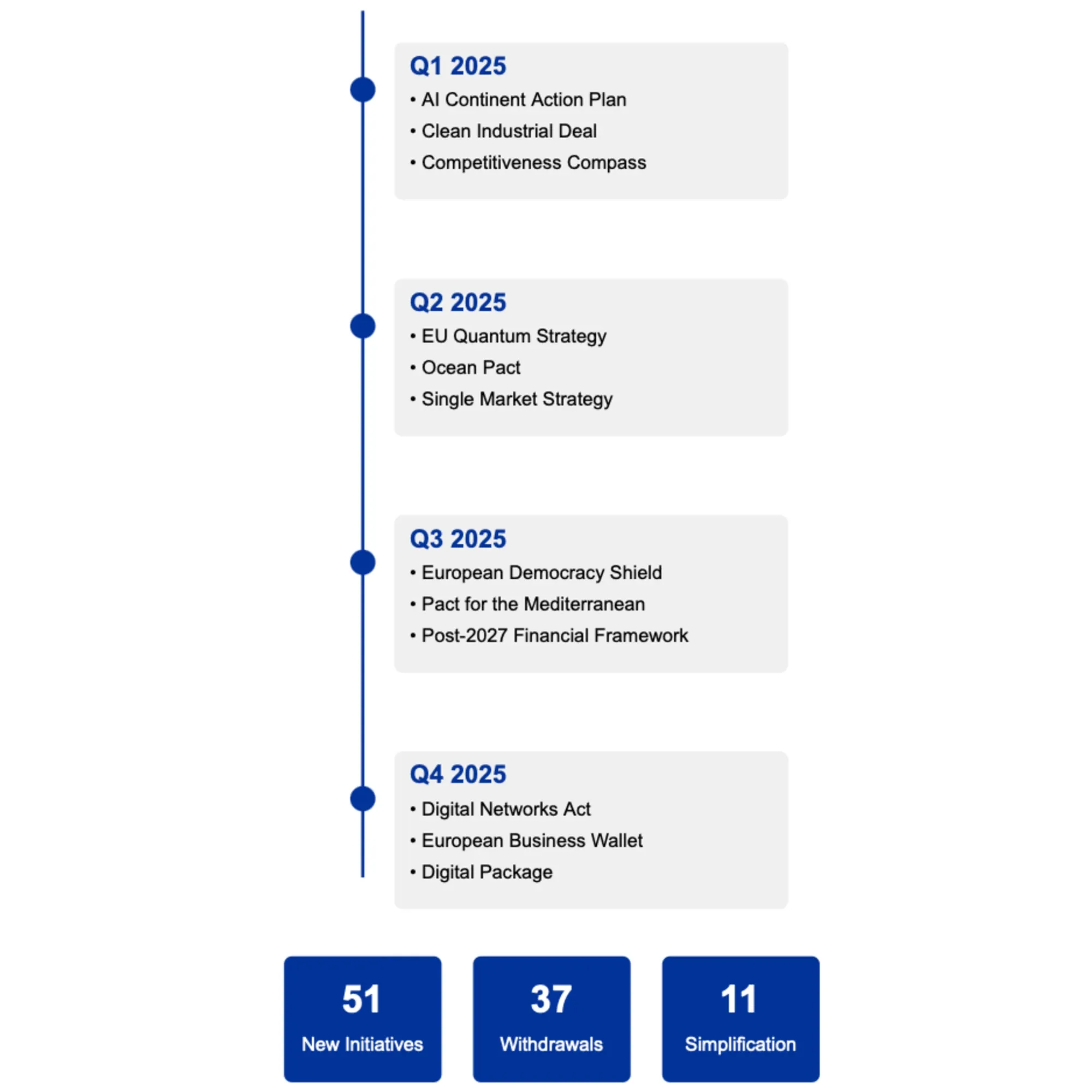EU scraps privacy and AI liability rules as Commission unveils 2025 work plan
The European Commission withdraws key digital policies while prioritizing AI development and economic competitiveness.

The European Commission today announced the withdrawal of two major digital policy proposals - the long-stalled ePrivacy Regulation and the AI Liability Directive - as part of its 2025 work programme that shifts focus toward boosting economic competitiveness and technological development.
According to the documents released by the Commission, the decision to withdraw the ePrivacy proposal comes after eight years of unsuccessful negotiations between EU co-legislators. The Commission cited both the lack of foreseeable agreement and an outdated technological and legislative landscape as key reasons for abandoning the initiative.
The ePrivacy Regulation, first proposed in 2017, aimed to update EU rules around online tracking technologies and align penalties with the bloc's General Data Protection Regulation (GDPR). According to Dr. Lukasz Olejnik, an independent researcher and consultant quoted in the documents, "Ending this trainwreck is a good move. The writing was on the wall long ago; this was a funeral in slow motion."
CDU MEP Axel Voss expressed strong criticism over the withdrawal of the AI Liability Directive, describing it as "a disaster for European companies and citizens alike." According to the Commission files, Voss argued that scrapping the framework creates legal uncertainty that primarily benefits large technology companies while making it extremely difficult for consumers to claim damages related to AI systems.
The work programme, presented by Commission President Ursula von der Leyen, outlines a significant policy shift toward enhancing Europe's competitiveness in artificial intelligence development. According to the Commission's announcement, a new "AI Continent Action Plan" will be published in the first quarter of 2025, focused on computing capacities and AI funding.
The Commission also plans to introduce a Cloud and AI Development Act to boost access to data and accelerate homegrown AI development. A comprehensive quantum computing strategy is scheduled to follow in the second quarter of 2025.
In total, the Commission's 2025 agenda includes 51 new policy initiatives, with 11 out of 18 legislative proposals containing significant simplification measures. According to the work programme documents, this reflects a broader push to reduce administrative burdens by at least 25% overall and 35% for small and medium-sized enterprises.
The programme introduces several new strategic initiatives, including the Digital Networks Act scheduled for late 2025, which aims to regulate the future of the telecommunications market in Europe. According to industry stakeholders cited in the documents, this proposal has already sparked concerns about potential impacts on regional competition among telecommunications providers.
Looking beyond technology, the Commission announced plans to propose a 90% emission-reduction target for 2040 as part of planned amendments to the European Climate Law. The work programme also outlines new frameworks for sustainable transport investment and bioeconomy development.
Valdis Dombrovskis, Commissioner for Economy and Productivity, emphasized in the announcement that the new agenda aims to reduce bureaucratic burdens on businesses. "European businesses should spend less time and resources complying with red tape, so that they can instead focus on what really matters: developing innovative ideas," Dombrovskis stated according to the Commission press release.
The work programme represents the first major policy blueprint from the new Commission that took office in December. It sets out the bloc's legislative and policy priorities for 2025 as the EU faces increasing global competition in strategic sectors like artificial intelligence and quantum computing.

